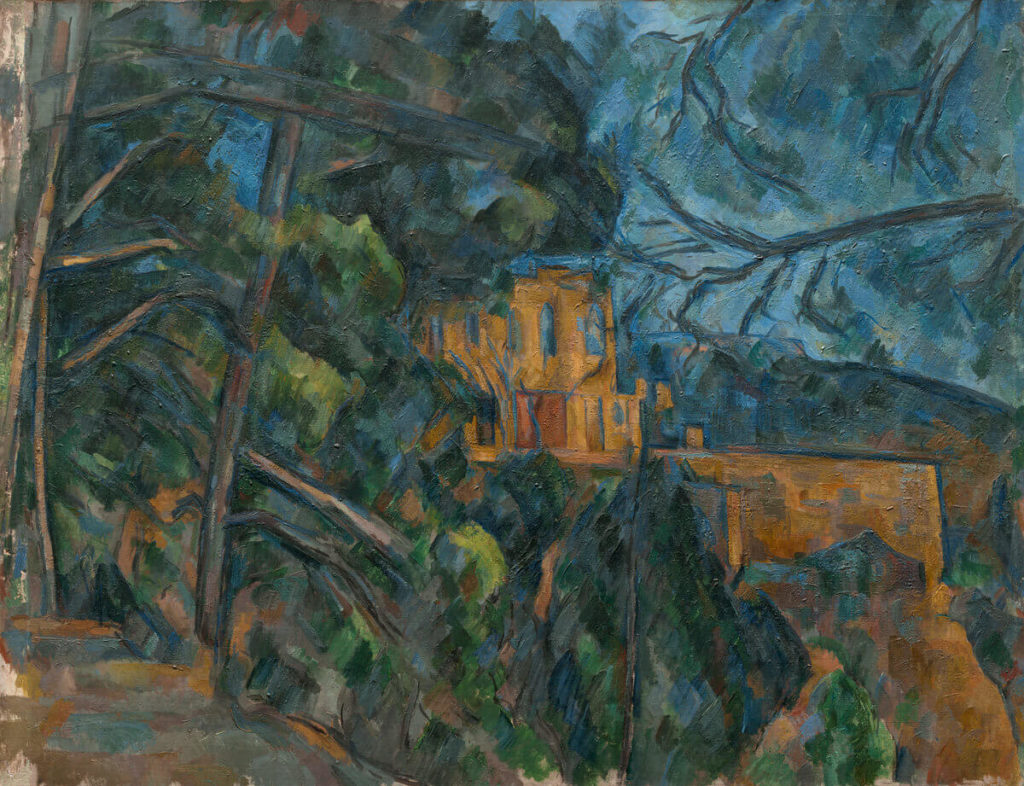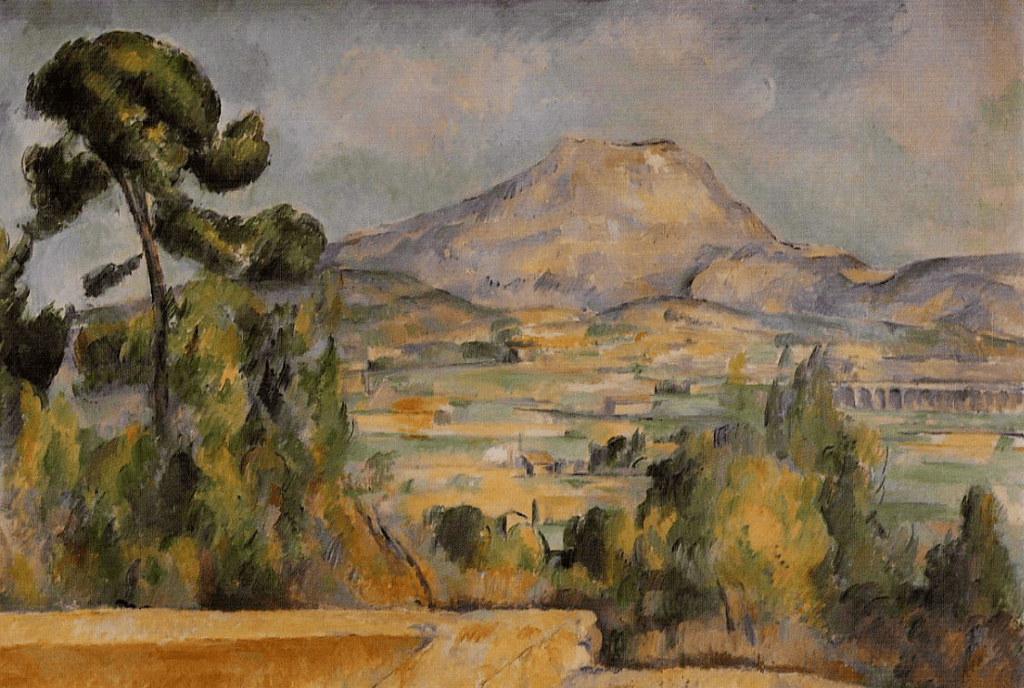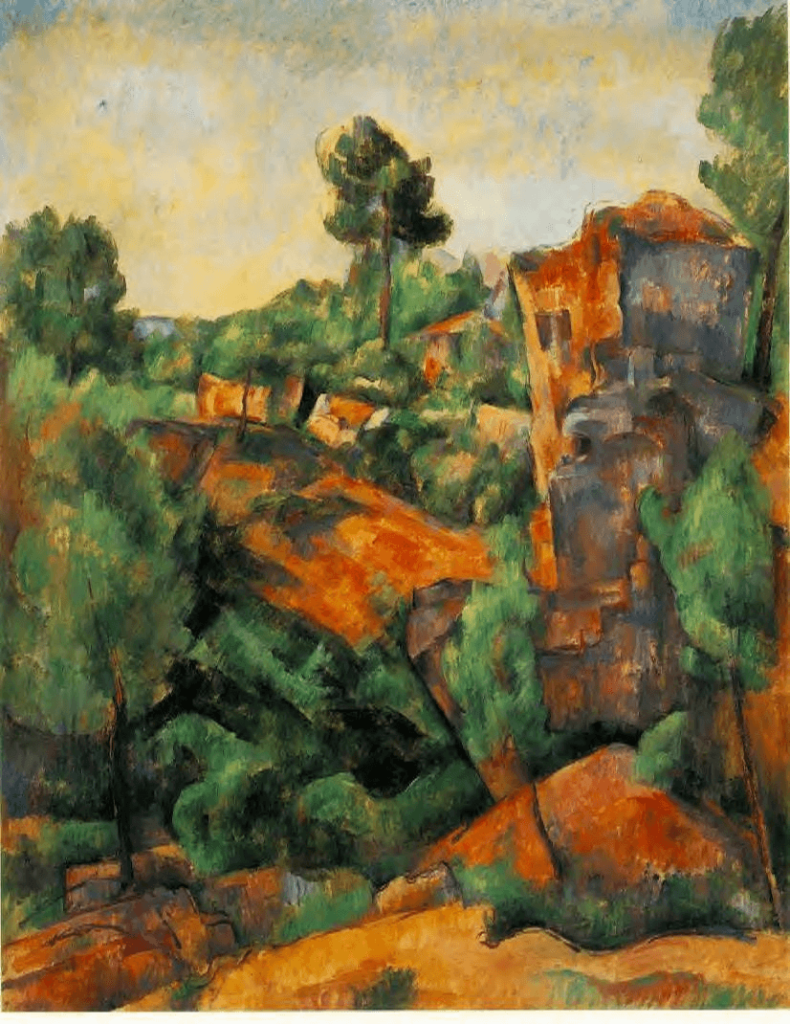Masterpiece Story: L.O.V.E. by Maurizio Cattelan
In the heart of Milan, steps away from the iconic Duomo, Piazza Affari hosts a provocative sculpture by Maurizio Cattelan. Titled...
Lisa Scalone 8 July 2024
Chateau Noir is one of several paintings Paul Cézanne made of a Neo-Gothic castle in his hometown, Aix-en-Provence in the south of France. Chateau noir means black castle in French, and this nickname may come from the castle’s ominous-looking appearance. It does seem rather foreboding in this particular painting, but it looks much friendlier in some of his others. Here, present to you the landscape Chateau Noir, now at the National Gallery of Art in Washington, DC.

Paul Cézanne (1839–1906) was probably the most significant figure in late-19th century modern art. He’s often considered the forefather of movements such as Cubism, Fauvism, and Abstraction. Although critics and viewers didn’t know what to make of his unique style in his own time, legions of 20th-century artists have looked to him as an inspiration. His work is most commonly grouped with the Post-Impressionists, but he never considered himself to be part of any style or group.



In Chateau Noir, we can see how Cézanne broke away from naturalism in a whole new way. While the Impressionists had previously made waves for their innovations, their aim was still primarily to depict the world as they saw it. They simply had new ideas about how to do this. Although Cézanne was friends with several Impressionists and exhibited at some of their exhibitions, he disagreed with them artistically.
Cézanne was one of the first western artists to feel that there was more to any subject than its visual appearance at a given moment. His paintings combine multiple different viewpoints into the same composition; this was a groundbreaking approach that paved the way for Cubism. For Cézanne, forms were the most essential elements of a painting, and he created them by building up layers of often-vivid color.
In Chateau Noir, it’s quite clear that Cézanne didn’t care for conventional perspective. It is impossible to determine the spacial relationship between the castle and the trees. There’s a flattened effect, where these two elements seem to be directly on top of each other. The mountain is clearly in the background, but it’s difficult to tell how far away it is. These details were simply not important to Cézanne, who cared more about painting deeper truths than he did about simply reproducing what he saw in front of him.



Many of Cézanne’s favorite artistic subjects, including the Chateau Noir, were located in the Aix area, where he spent much of his life. The best known is Mont Sainte-Victoire, which Cézanne depicted many times throughout his career. Nearby are the Bibemus Quarries, which he also painted frequently. Cézanne’s many paintings of rocks and quarries will soon get their own exhibition at the Princeton University Art Museum.
Chateau Noir. National Gallery of Art. Washington DC. Accessed 19 Jan 2020.
Paul Cézanne. National Gallery of Art. Washington DC. Accessed 19 Jan 2020.
Beth Harris and Steven Zucker. “An introduction to the painting of Paul Cézanne.” In Smarthistory, 9 Aug 2015. Accessed 19 Jan 2020.
Ivan Savvine. “Paul Cézanne Artist Overview and Analysis.” In TheArtStory.org. Edited and published by The Art Story Contributors. June 1, 2011. Updated and modified regularly. Accessed 19 Jan 2020.
James Voorhies. “Paul Cézanne (1839–1906).” In Heilbrunn Timeline of Art History. New York: The Metropolitan Museum of Art, 2000–. October 2004. Accessed 19 Jan 2020.
DailyArt Magazine needs your support. Every contribution, however big or small, is very valuable for our future. Thanks to it, we will be able to sustain and grow the Magazine. Thank you for your help!